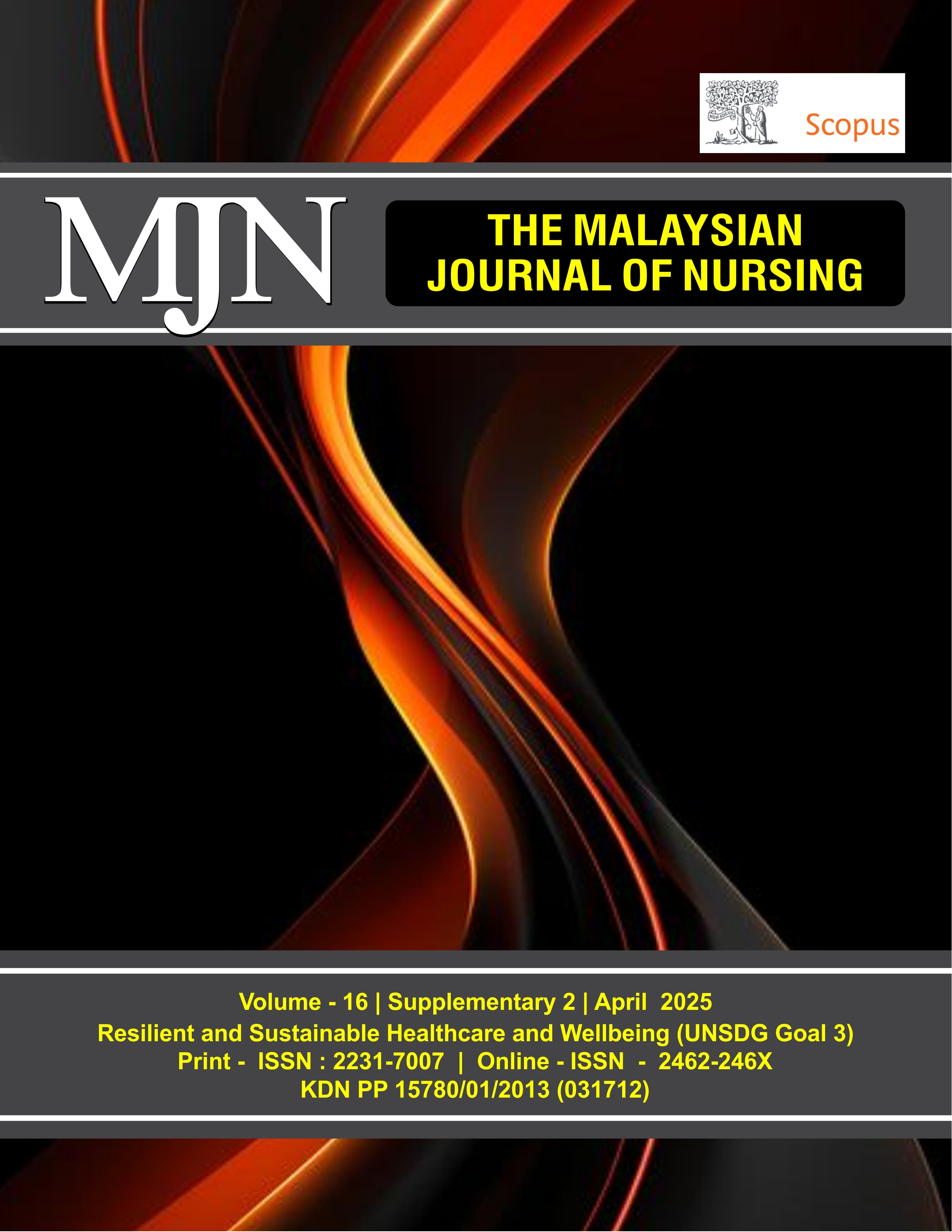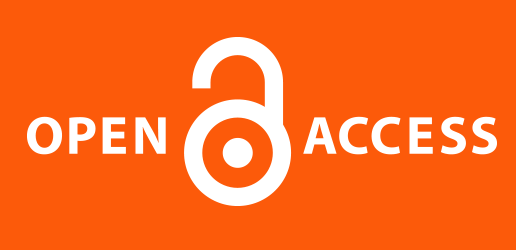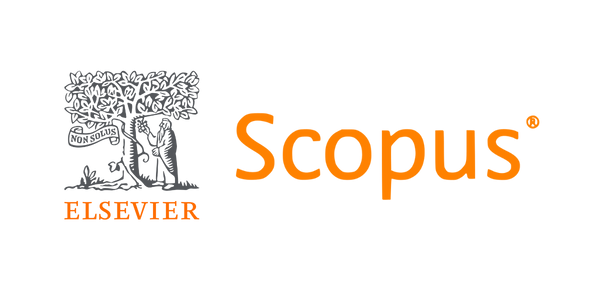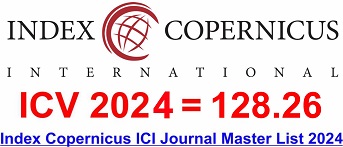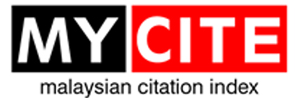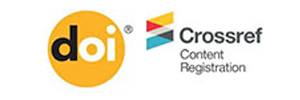Enhancing Reproductive Health Literacy via Audio App for Visually Impaired Female Adolescents in Indonesia: Design and Usability Evaluation
DOI:
https://doi.org/10.31674/mjn.2025.v16isupp2.012Abstract
Background: Visually impaired female adolescents face significant barriers in accessing sexual and reproductive health (SRH) information due to inaccessible educational materials and societal stigma. Audio-based mobile applications provide an innovative, inclusive approach to addressing these challenges, enabling the dissemination of reproductive health information tailored to their needs. Objective: This study aimed to design and evaluate the usability of an audio-based mobile application to enhance reproductive health literacy among visually impaired female adolescents in Indonesia. Methods: A mixed-methods study was conducted, comprising the development of an audio-based mobile app using a user-centred design framework and a usability evaluation involving 15 visually impaired female adolescents aged 15–19 years. Quantitative data were collected using the System Usability Scale (SUS) and Post-Study System Usability Questionnaire (PSSUQ), while qualitative data were gathered through semi-structured interviews. Data were analysed using descriptive statistics and thematic analysis. Results: The app achieved a mean SUS score of 85.3 (SD = 6.4), indicating excellent usability. The PSSUQ revealed high user satisfaction, with a mean score of 1.9 (SD = 0.4). Qualitative analysis identified three themes: Accessibility and Navigation, Content Relevance and Clarity, and Suggestions for Improvement. Participants appreciated the app’s voice-guided navigation and culturally appropriate content, although recommendations were made to enhance interactivity and customisation features. Conclusion: The audio-based mobile app demonstrated high usability and satisfaction, effectively addressing the SRH education needs of visually impaired female adolescents. Future development should incorporate user feedback to improve navigation and introduce personalised features, ensuring broader accessibility and engagement.
Keywords:
Audio-Based App, Mobile Health Education, Reproductive Health Literacy, Usability Evaluation, Visually Impaired AdolescentsDownloads
References
Ahmed, S. R. H., Salem, S. G., Feshawy, R. E., & Amr, A. E. F. (2021). Audio-drama nursing intervention utilizing peer education on menstrual hygiene and sickness management among blind adolescents. Tanta Scientific Nursing Journal, 20(1), 230-59. https://dx.doi.org/10.21608/tsnj.2021.171341
Badu, E., Agyei-Baffour, P., & Opoku, M. P. (2018). Enablers and barriers in accessing sexual and reproductive health services among visually impaired women in the Ashanti and Brong Ahafo Regions of Ghana. Reproductive Health Matters, 26(54), 51–60. https://doi.org/10.1080/09688080.2018.1538849
Bagirisano, J., Bazakare, M. L. I., Nkurunziza, A., Hitayezu, J. B. H., Uwera, Y. D. N., Mukankusi, J. N., ... & Habtu, M. (2025). The effect of an audio-recorded intervention program on the knowledge and self-reported practices of menstruation and hygiene among visually impaired young girls in Rwanda: a mixed method study. BMC Public Health, 25(1), 1-11. https://doi.org/10.1186/s12889-025-22809-x
Brooke, J. (1996). SUS-A quick and dirty usability scale. Usability Evaluation in Industry, 189(194), 4-7. https://doi.org/10.1201/9781498710411
Chaudary, M. A., & Ahmad, S. (2023). Usability of remote navigation assistance for visually impaired individuals: A user-centered design approach. International Journal of Human-Computer Interaction, 39(4), 345–360. https://doi.org/10.1080/10447318.2023.1234567
Creswell, J. W., & Creswell, J. D. (2017). Research design: Qualitative, quantitative, and mixed methods approaches. Sage publications, US. Retrieved from: https://shorturl.at/sDuQK. Accessed on 15th June, 2024
Dixit, V. (2024, December 5). Compatibility with screen readers and other assistive technologies. Airmeet. Retrieved from https://www.airmeet.com/hub/blog/compatibility-with-screen-readers-and-other-assistive-technologies/. Accessed on 15th July, 2024.
Kirby, D., Laris, B. A., & Rolleri, L. (2007). Sex and HIV education programs: Their impact on sexual behaviours of young people throughout the world. Journal of Adolescent Health, 40(3), 206–217. https://doi.org/10.1016/j.jadohealth.2006.11.143
Kusumaningrum, D. E., & Wulandari, S. (2022). Parents' behaviour in delivering adolescent reproductive health education. Jurnal Kesehatan Reproduksi, 13(2), 85–92. http://dx.doi.org/10.11591/ijphs.v11i4.21440
Kusumaningtyas, D., Wahyuni, B., & Hapsari, E. D. (2022). Parents experience in providing reproductive health education for adolescent with visual disability in Yogyakarta. NurseLine Journal, 7(1), 1-7. https://doi.org/10.19184/nlj.v7i1.23603
Li, Z. S., Arony, N. N., Devathasan, K., Sihag, M., Ernst, N., & Damian, D. (2024, February). Unveiling the life cycle of user feedback: Best practices from software practitioners. In Proceedings of the 46th IEEE/ACM International Conference on Software Engineering (pp. 1-13). https://doi.org/10.1145/3597503.3623309
Moured, K., & El-Sayed, H. (2024). Haptic SVG diagrams to assist blind individuals in understanding graphical information. Assistive Technology, 36(2), 89–98. https://doi.org/10.1080/10400435.2024.1234567
Nasser, N., Ali, A. Y., Karim, L., & Al-Helali, A. A. (2024). Enhancing mobility for the visually impaired with AI and IoT-enabled mobile applications. Science Open Preprints. https://doi.org/10.14293/PR2199.000775.v2
Pakasi, D. T., & Kartikawati, R. (2013). Between needs and taboos: Sexuality and reproductive health education for high school students. Makara Journal of Health Research, 17(2), 79-87. https://doi.org/10.7454/msk.v17i2.3030
Rushton, R., Kossyvaki, L., & Terlektsi, E. (2022). Music-based interventions for people with profound and multiple learning disabilities: A systematic review of the literature. Journal of Intellectual Disabilities, 26(1), 29–40. https://doi.org/10.1177/17446295221087563
Sianipar, M., & Siregar, A. Y. M. (2023). The effectiveness of audiovisual media on anemia knowledge among adolescent girls. Jurnal Gizi dan Pangan, 18(1), 45–52. https://doi.org/10.25182/jgp.2023.18.1.45-52
Soltani, I., Schofield, J., Madani, M., Kish, D., & Emami-Naeini, P. (2025, April 8). User-centered insights into assistive navigation technologies for individuals with visual impairment (Version 1). arXiv, Cornell University. https://doi.org/10.48550/arXiv.2504.06379
Ubisi, L. (2020). Comprehensive sexuality education for learners with visual impairment. Teaching Learners with Visual Impairment, 321–345. http://dx.doi.org/10.4102/aosis.2020.BK191.10
WebAIM. (2024). Designing for screen reader compatibility. WebAIM. Retrieved from: https://webaim.org/techniques/screenreader/webaim.org. Accessed on 14th June, 2024
World Health Organization. (2024). The role of digital health tools in adolescent reproductive education. PLOS Global Public Health, 2(6). https://doi.org/10.1371/journal.pgph.0001234
Zhong, M., Chen, R., Chen, X., Fogarty, J., & Wobbrock, J. O. (2025, April). Screen Audit: Detecting screen reader accessibility errors in mobile apps using large language models. In Proceedings of the 2025 CHI Conference on Human Factors in Computing Systems, 1-19. https://doi.org/10.1145/3706598.3713797
Published
How to Cite
Issue
Section
License
Copyright (c) 2025 The Malaysian Journal of Nursing (MJN)

This work is licensed under a Creative Commons Attribution-NonCommercial-NoDerivatives 4.0 International License.

